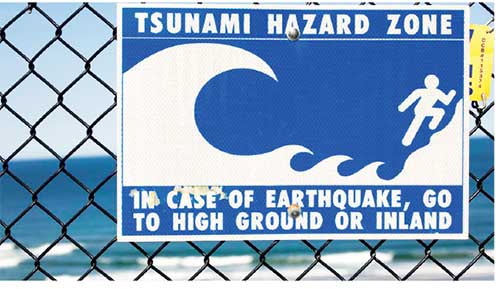Features
A Tale of Two T20s and a Tsunami

By Rajitha Ratwatte
fromoutsidethepearl@gmail.com
The New Zealand Black Caps played a deciding T20 game in a five-match series. They had won the first two games convincingly and then lost the next two equally convincingly. The games they lost were played with no spectators due to a resurgence of Covid-19 and the consequent level 2 lockdown imposed on greater New Zealand. The crowds would have not been as interested anyway as the Rugby season had already started and Aotearoa – New Zealand is VERY much a rugby nation!
It started with the selection of the side. NZ dropped its multimillion-dollar IPL player, Jamieson in favour of another spinner. Jamieson had also underperformed ever since he found himself worth a fortune to the Indians. I wonder if our Selectors in the pearl would have had the courage or the conviction to make such a decision?
Australia won the toss and decided to bat first, The Blackcaps spinners bowled 12 out of the 20 overs, the highest number of overs bowled by an NZ T20 international side ever. The Aussies were dismissed for 142 a lot less than they would have hoped for. The Kiwi right-arm leg-spinner Ish Sodhi putting in a man-of-the-match performance.

A very important point and lesson to be learned is that empowered officials, with suitable qualifications and genuine motives, are the key to obtaining great outcomes. The decisions made by the selectors, further strengthened by innovative thinking and fearless, committed implementation by the coaches (all locals) and players made the difference.Sri Lanka also had a series decider, also a T20 to be played against the West Indies. A strange decision to win the toss and bat first, followed by a lacklustre batting display. A few innocuous swishes and play and misses from the top order and a total lack of boundaries from the experienced Mathews and Chandimal saw a below-par total. The Sri Lankan team was unchanged and the Thisara Perera did nothing but earn his match fee, doing no bowling or batting. One simple catch and another possible match-winning catch went down from Gunathilake.
The Windies batters laughed and joked their way to a win despite their best efforts to snatch defeat from the jaws of a gifted victory. A victory gifted by a team with leaders and senior players who refused to take responsibility and bowl at least an over at a crucial stage of the match. A team whose selectors refused to change the playing eleven and give a youngster a change in spite of proven and regular failures from so-called senior players. A team with no innovation, no plan, and very highly paid foreign coaches!New Zealand had a series of offshore earthquakes ranging from 7.1 to 7.4 and even 8.1 on the Richter scale last week. Anything over 7.8 is supposed to virtually guarantee a Tsunami and quite rightly Tsunami warnings were triggered nation-wide. Local sirens and SMS messages to all registered phones accompanied by a loud alarm tone started from around 2.30am for some parts of the country until around 11 am for Auckland. The people reacted with great discipline and restraint, following drills and heading for higher ground. The morning news shows that usually finish at 9 am stayed on-air and updated us all the time. The minister in charge, a young Maori lady we had never seen before, as she was newly elected. Ms. Kiri Tapu Allen gave a great account of herself at press conferences, staying calm and giving the public real information. At one stage we had a schedule available telling us when each area could expect Tsunami waves and approximate timing.
Even though the waves didn’t come in most cases and even if they did, the effects were minimal, the people stayed on higher ground until the official all-clear was given at around 2.30 pm. It was a scorching hot day too, and wonderful to see how the schools had organised tents and refreshments for their students and buses to take them to higher ground all with just minutes of warning. Subsequent interviews from a cross-section of society seemed to reach a consensus that what we Kiwis’ do is “follow instructions and do as we are told”. We also seem to be having more and more trust in our government and officials. It is easy to do so when relatively unknown ministers give such sterling performances on their debuts. There is a full review of the warning systems and the evacuation procedures underway. The idea is to find ways to improve a system that seems to work rather well.Spend a minute or two dear denizens of the Pearl, think what will happen when the next Tsunami comes to our motherland. It is not that we do not have the people to arrange a proper response or have warning systems and response infrastructure in place. Will the general populace have the discipline to do as they are told or enough confidence in the leadership provided by those in charge?